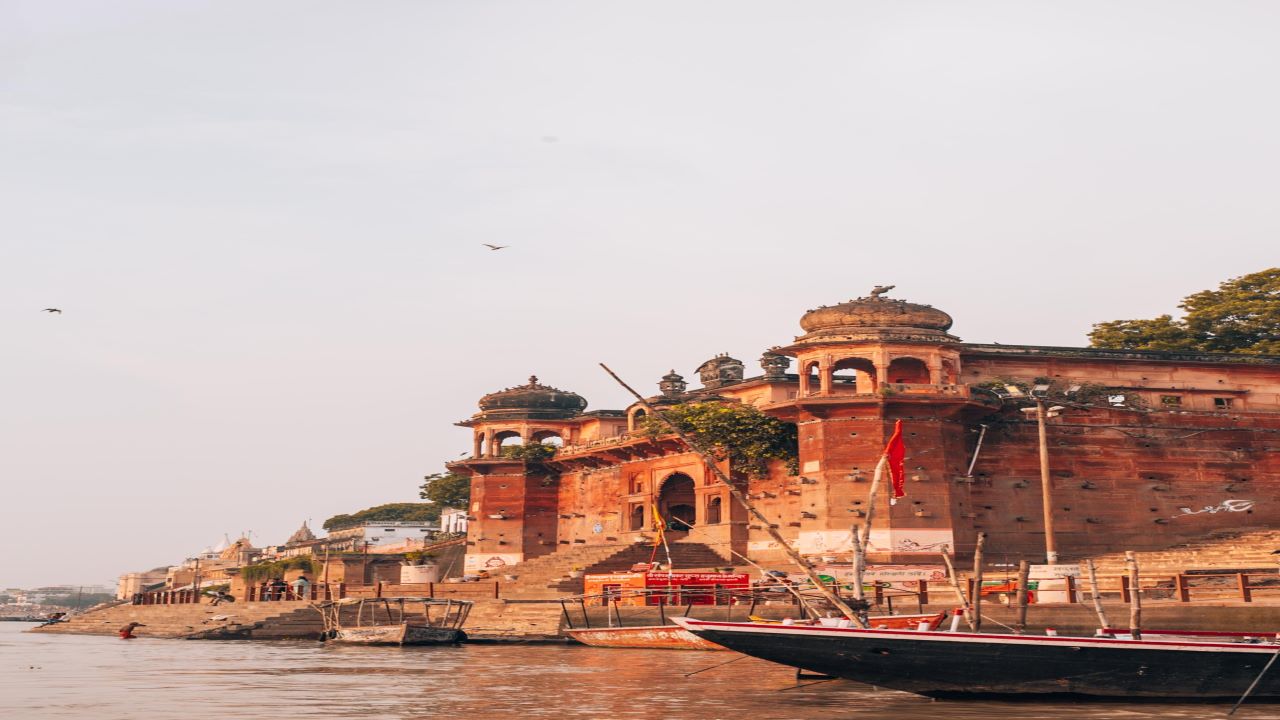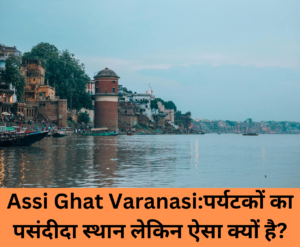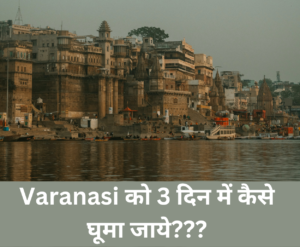A Ganga ghat in varanasi is a series of steps leading down to the river Ganges, typically found in the holy city of Varanasi, India. Ghats are used for bathing, performing religious rituals, and as a place for pilgrims to gather. The Ganges River is considered sacred in Hinduism and the ghats are considered an important pilgrimage site for Hindus. In Varanasi there are 88 historical Ganga ghats with different names including the famous ghats such as Assi Ghat, Dashaswamedh Ghat, Manikarnika Ghat, Harishchandra Ghat, Raj Ghat, Lalita Ghat and many more.
Famous Ganga Ghats of Varanasi
Dashaswamedh Ghat
Dashashwamedh Ghat is one of the most important and oldest ganga ghats in Varanasi, India, located on the western bank of the Ganges River. It is believed to be the place where Lord Brahma, the Hindu god of creation, offered ten horses in a yagna (fire sacrifice) to Lord Shiva. The ghat is named after this legend, with “dashashwamedh” meaning “ten horses”. It is one of the main venues for the Ganga Aarti ceremony, a Hindu ritual of worship to the Ganges River, which takes place every evening. The ghat is also a popular spot for tourists to witness the ceremony and take a boat ride on the Ganges. Also it is very near to the Vishwanath Temple.
Assi Ghat
Assi Ghat is a famous Ghats in Varanasi (a series of steps leading down to a body of water, typically a river) in Varanasi, also known as Benares or Kashi, which is a city located in the northern Indian state of Uttar Pradesh. It is one of the oldest living cities in the world and is considered a sacred place by Hindus, Jains and Buddhists. Assi Ghat is located at the confluence of the Ganges and Assi rivers and is known for its religious significance and for being a major center of learning and culture.
Manikarnika Ghat
Manikarnika Ghat is one of the most important and sacred ganga ghats in Varanasi, India, located on the western bank of the Ganges River. It is considered one of the holiest places in Hinduism and is a major center of pilgrimage.
According to Hindu mythology, the ghat was created by Lord Vishnu, who dug a kund (water tank) with his chakra (discus) to provide a sacred place for Lord Shiva and his consort Parvati to bathe. It is believed that the earring (manikarnika) of Parvati fell into the kund while she was bathing, giving the ghat its name.
The ghat is also a significant site for the ritual of shmashana, the Hindu practice of cremating the dead and scattering the ashes in the Ganges River. The ghat is also known as the burning ghat as it is one of the main places where dead bodies are cremated. Many Hindu pilgrims come to Manikarnika Ghat to immerse the ashes of their loved ones in the Ganges, believing that it will bring them salvation and release from the cycle of rebirth.
Harishchandra Ghat
Harishchandra Ghat is one of the oldest and most important ghats in Varanasi. According to Hindu mythology, King Harishchandra, known for his honesty and integrity, was put to test by the sage Vishwamitra. As a result, he was forced to sell his wife and son as slaves and himself to work in a funeral ground. The king proved his devotion and integrity to his moral principles and was blessed by the god of Truth (Rudra) and was able to regain his kingdom, his wife and his son.
Best Month To Visit Ghats
The best month to visit the Ganges River and the ghats in Varanasi, India, depends on personal preference and the type of experience you are looking for.
The months from October to March are considered the best time to visit Varanasi as the weather is cool and pleasant, making it comfortable to explore the city and the ghats. During this time, the Ganges River is also relatively low, making it easier to access the ghats for bathing and rituals.
However, if you wish to witness the Ganga Aarti ceremony, which is one of the most important and spectacular ritual in varanasi and take place every evening, the months from May to June and October to November is the best time to visit. The festival of Diwali, which takes place in October or November, is also an excellent time to visit as the city is decorated with lights and the ghats are busy with people celebrating the festival.
It is worth noting that the summer months (April to June) can be quite hot and humid and monsoon season (July to September) can be quite wet and damp, which can make it difficult to fully enjoy the city and the ghats.
How to Reach Ganga Ghat in Varanasi
There are several ways to reach the Ganges River and the ghats in Varanasi, India:
By Air: Varanasi has its own airport, Lal Bahadur Shastri International Airport, which is well connected to major cities in India and as well as from Thailand, Srilanka and Dubai.. From there, you can take a taxi or a rickshaw to reach the ghats.
By Train: Varanasi has its own railway station, Varanasi Junction, which is well connected to major cities in India. From there, you can take a taxi or a rickshaw to reach the ghats.
By Bus: Varanasi is well connected by road and there are regular bus services from major cities in India. From Varanasi bus station, you can take a taxi or a rickshaw to reach the ghats.
By Boat: You can also reach the ghats by taking a boat ride on the Ganges River. Boats are available from various points along the river and provide a unique way to see the ghats and the city.
It is important to note that the ghats are located on both sides of the Ganges River and can be reached by crossing the river by boat or by foot. Many ghats have stairs that lead down to the river, and it’s essential to be cautious while walking as they can be slippery.
Accomodation Near Ghat
There are several options for accommodation near the Ganges River and the ghats in Varanasi, India. Some options include:
Hotels: There are many hotels located near the ghats, ranging from budget-friendly options to luxury accommodations. Many of these hotels offer views of the Ganges River and the ghats, and some even have their own private ghats for guests to use.
Guesthouses: There are also many guesthouses located near the ghats, which offer a more traditional and local experience. These accommodations are often run by families and offer a more personal touch.
Ashrams: Ashrams are spiritual communities that offer accommodation and yoga or meditation classes. Staying in an ashram is a good option for those who wish to have a spiritual experience while in Varanasi.
Homestays: Homestays are a great way to experience the local culture and hospitality. You will be staying in a local’s home, and it’s a chance to understand the culture and lifestyle of the people.
Dormitory: There are also few dormitory options available near the ghats, which are particularly popular among backpackers and budget travelers.
It is worth noting that accommodations near the ghats can be quite busy and may book up quickly during peak season. It is recommended to book in advance to ensure availability.
For best accommodation and experience please visit the site makemytrip




